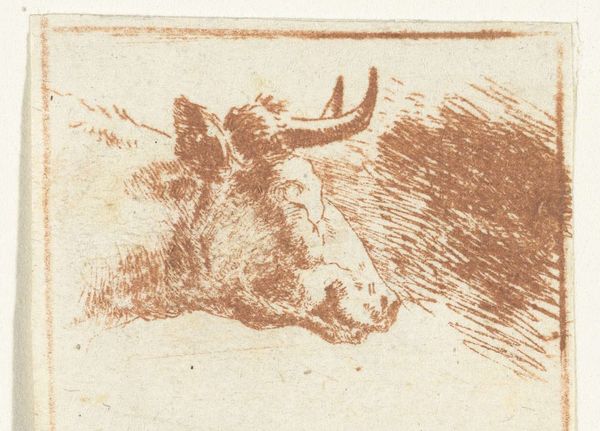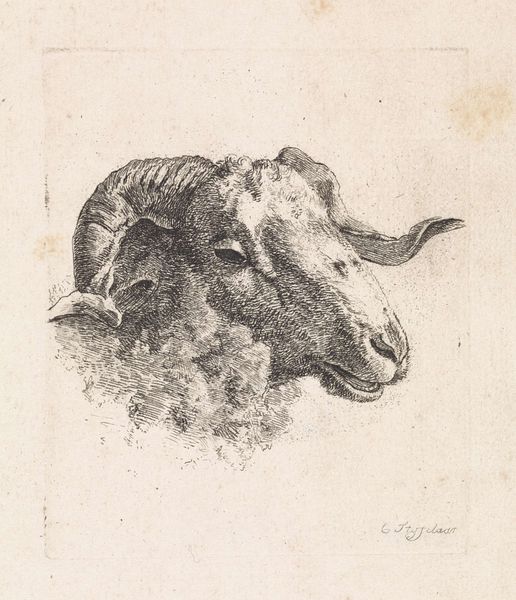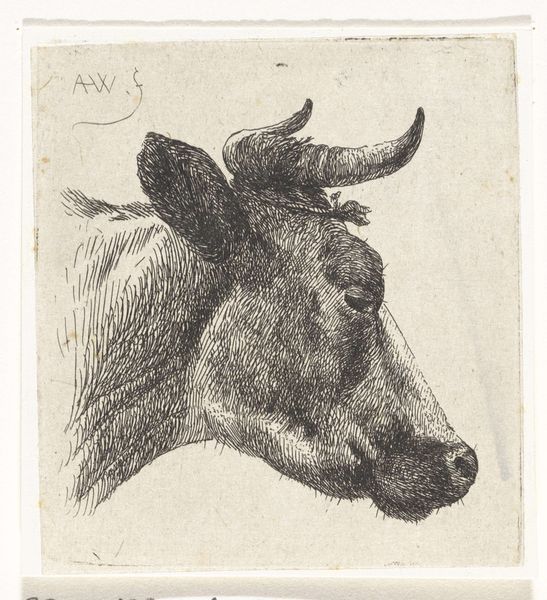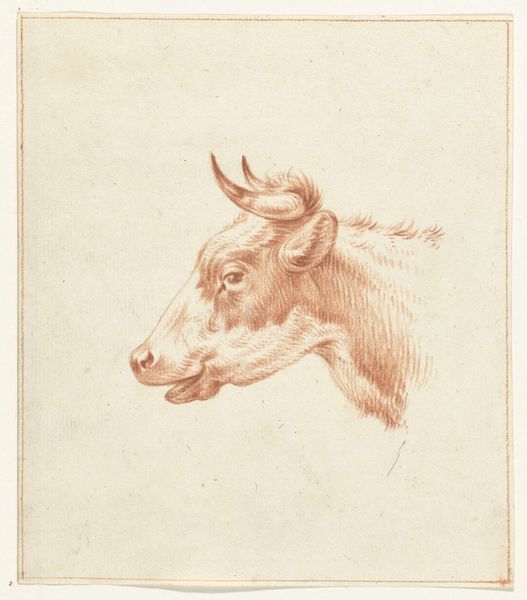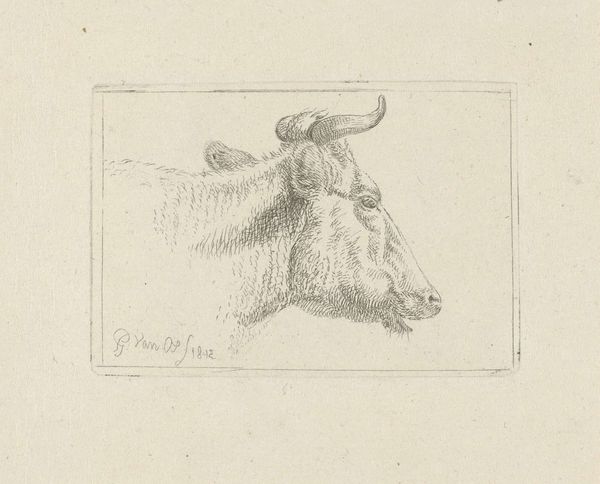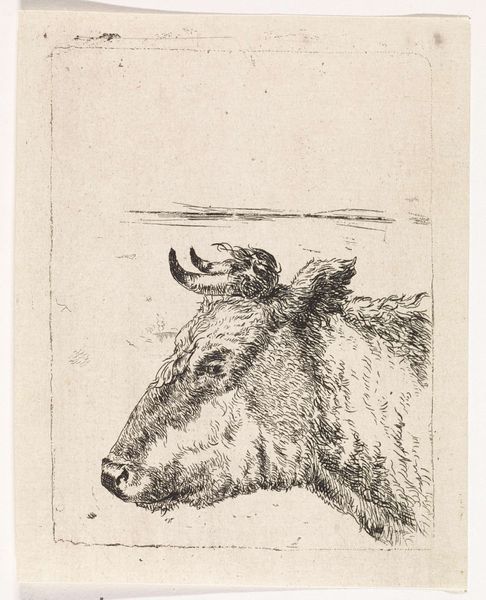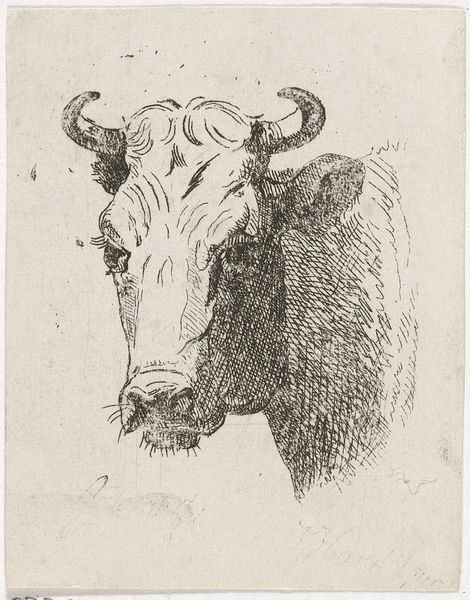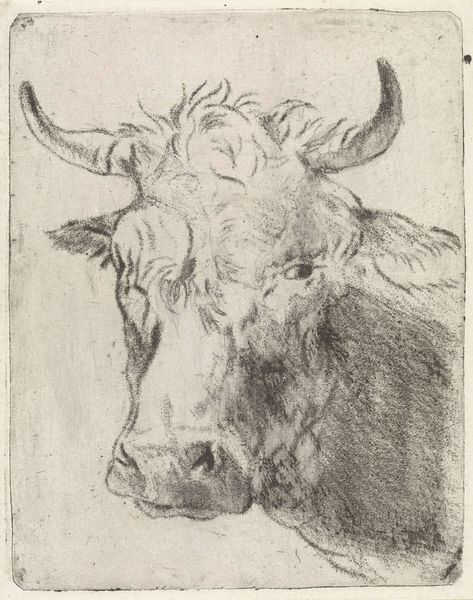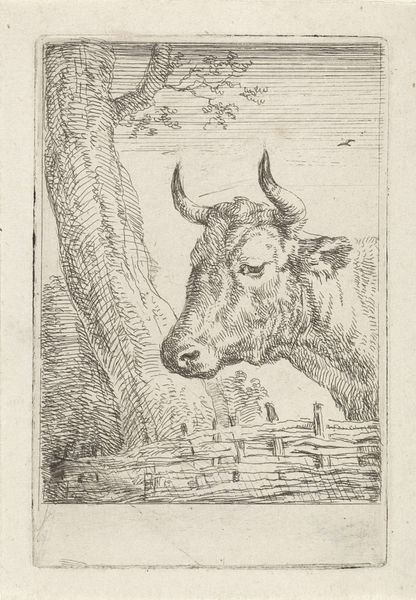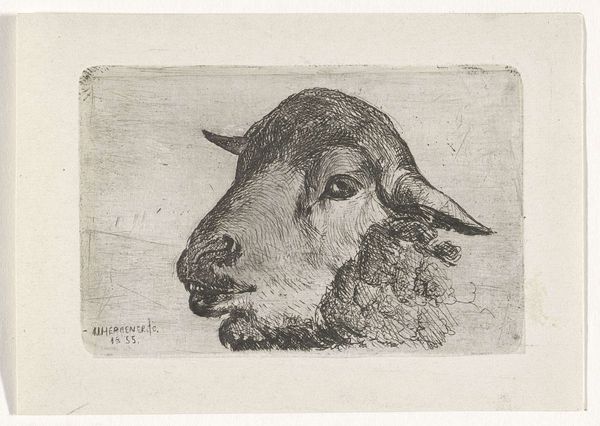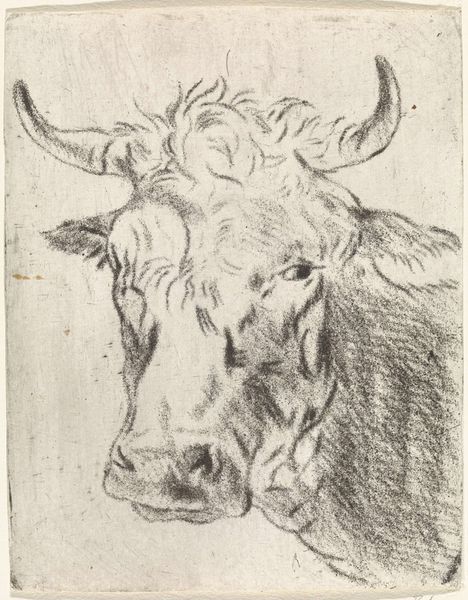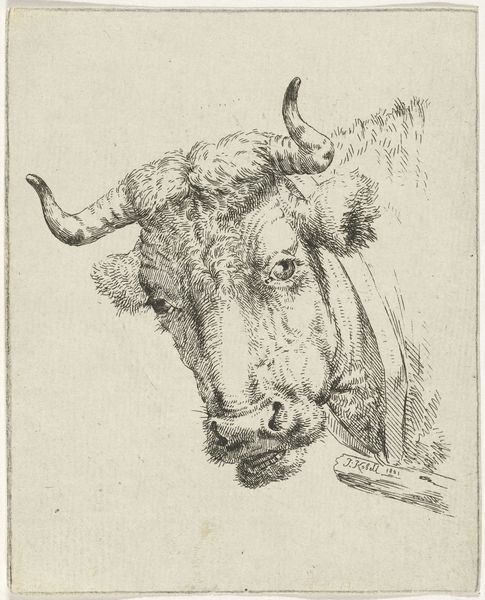
drawing, print, etching
#
portrait
#
drawing
# print
#
etching
#
etching
#
line
#
realism
Dimensions: height 30 mm, width 44 mm
Copyright: Rijks Museum: Open Domain
Editor: Here we have "Koeienkop naar rechts," or "Cow's Head Facing Right," an etching by Ernst Willem Jan Bagelaar, made sometime between 1798 and 1837. I find the lines very expressive despite its humble subject matter. What stands out to you about this image? Curator: The choice of etching as a medium immediately highlights the labor involved in its production. Think about the copper plate, the acid, the repetitive motions needed to create the lines. How does that labor inflect our reading of the cow itself? Editor: Interesting. So, instead of just seeing a cow, we should also think about how it was made. But is the labor of the artist supposed to tell us something about, say, farming and agriculture? Curator: Precisely! Consider the socio-economic context. The print would have been reproduced and consumed widely. Perhaps it was used as a model for other artworks or even as a decorative element for household items. What does this say about the value of depicting animals during this period, both in rural communities and in burgeoning urban centers? Editor: It suggests that depictions of livestock had a clear economic value. Was Bagelaar commenting on the industrialization of farming, by any chance? Curator: It's possible. While we lack explicit textual clues, consider that prints like these provided access to imagery for broader audiences than paintings. They democratize representation while also becoming commodities themselves, reflective of the shifting material culture of the time. Editor: So, seeing the etching less as a picture *of* a cow and more as a thing *about* production, labor, and even consumerism of images. Thanks for helping me see it differently. Curator: Indeed, and how artistic labor participates in and reflects these shifts. It gives a lot more food for thought, doesn’t it?
Comments
No comments
Be the first to comment and join the conversation on the ultimate creative platform.
